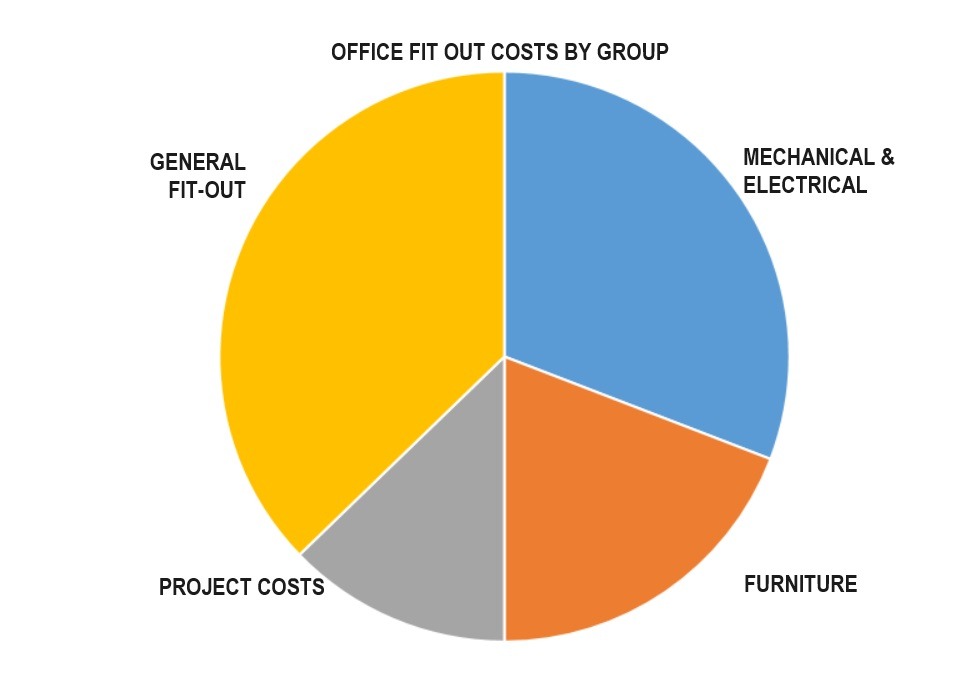A robust office refurbishment specification is the biggest lever to control cost, shorten timelines and reduce risk. In London, where live-environment works, landlord approvals and building control add complexity, a clear spec lets contractors price accurately, phase safely and deliver with minimal disruption.
Why a Specification Matters
A good specification is the foundation of your project: it defines scope, aligns stakeholders and prevents expensive guesswork. In multi-tenant London buildings (shared cores, quiet hours, listed elements), it also proves feasible to landlords and keeps building regulations and CDM on track.
Clarity in the spec de-risks live-environment work. It shows which areas must stay operational, where flexible layouts are acceptable and how phases hand over, so daily operations continue safely while the space improves.

Core Principles for Any Refurb Spec
Start with business outcomes (productivity, wellbeing, brand) and lock the workplace efficiency levers (zoning, acoustics, lighting). Write for reality: access windows, goods-lift timings, noise limits and long-lead items.
Tie the spec to a realistic programme with phased handovers. Make approvals explicit (landlord, building control, H&S). More clarity → tighter pricing and fewer surprises once works begin.
The London Refurb Spec, Section-by-Section Template
Copy this framework into your document and customise it. Each section is there to make pricing accurate, phasing practical and delivery predictable.
A. Project context & goals
Define why you’re refurbishing (hybrid patterns, growth, energy savings) and what success looks like (e.g., 20% more collaboration areas, −15% energy use). Note constraints (listed features, shared cores, access windows).
B. Scope of works (by area & system)
Describe changes to layouts, electrical systems, HVAC, finishes, suspended ceilings, raised floors, joinery and decorations. Flag what to re-use vs replace to cut cost, shorten programme and lower embodied carbon.
C. Space planning & layouts
Attach test-fits and room data sheets: open plan, meeting rooms, focus booths, reception, kitchens, storage. Note capacities, adjacencies and privacy needs; align to company culture and brand identity.
D. Technical performance
Set targets/standards: lighting (lux/UGR), acoustics (Rw/DnT), comfort (temperature/CO₂), power/data density, AV, security, fire strategy and building regulations compliance.
E. Phasing & programme (live environment)
State decant strategy, quiet hours, zoning sequence and planned handover dates. Identify “always-on” areas and critical daily operations. Include methods for minimum/minimise disruption (night and weekend works).
F. Approvals & compliance
List landlord approvals, building control submissions, CDM roles, RAMS, permits, and inspections. Define documentation required at handover (O&M, as-builts, warranties).
G. Finishes & interior design
Specify palettes, durability, cleanability, and sustainability (low-VOC, FSC). Cover feature brand expression and wayfinding so the refurbished space feels like a new London office.
H. Furniture & moves
State office furniture reuse vs new, ergonomics, warranties and moves planning. Align desk/room ratios to hybrid policies and work closely with change teams.
I. Sustainability & circularity
Add reuse targets, diversion-from-landfill goals and metering/monitoring. Capture cost-effective delivery options that still lower environmental impact.
J. Tender pack/deliverables
Request drawings, specs, schedules, 3D visuals, RACI, risk register and site survey outputs. Ask for priced alternatives/value-engineering so choices are transparent.
Costing the Refurb
Use the spec to show inclusions/exclusions, alternates and per-sq-ft ranges for typical bands (refresh / comprehensive / premium). Ask for a cost plan that highlights risk allowances (e.g., hidden services) and long-lead items.
Lock scope before procurement, then issue a fixed, itemised proposal. Maintain a live change log so decisions stay transparent and your budget stays intact.

Programme & Phasing
Refurbishment in occupation is logistics-first. Build the programme around phased zones: segregation, clean routes, dust/noise control and progressive commissioning. Align with hybrid working peaks to minimise disruption.
Set weekly site reviews and publish a two-week look-ahead. Confirm the project manager’s single-point accountability and the soft-landing period for fine-tuning after handover.
CAT B Office Refurbishment
Most tenant-led London schemes are CAT B: turning an existing or blank canvas into a complete office that fits the occupier. Your spec should cover functional settings, finishes and the services that support them.
Get the balance right and the new office space works from day one,aligning layout, services and interior design to your unique business needs.
- Partitions, meeting rooms and collaboration settings
- Office furniture (ergonomic seating, storage)
- Brand identity and finishes
- Kitchens, breakout, reception
- Mechanical and electrical modifications
Compliance, H&S and Building Control
Spell out principal contractor duties, CDM roles, RAMS, inductions and audits. In London, make building control milestones explicit: submissions, inspections, commissioning and sign-off.
Detail live-floor controls for noise, dust and air quality, plus safe routes and signage. Specify handover documents,O&M, as-builts, warranties and training,so nothing is missed.
Sustainability & Re-Use
Refurbishment is your best chance to save carbon and money. Audit what can be retained (ceilings, grids, partitions, raised floors, doors, furniture), then design around re-use.
Specify LED and controls upgrades, ventilation improvements and durable finishes. Track results at close-out (diverted tonnage, energy deltas) for governance and brand reporting.
Deliverables Checklist
This checklist helps bidders price consistently and keeps delivery on rails. Include it as an appendix so everyone works from the same playbook.
Adjust the level of detail to the project size. Expand drawings and performance criteria for complex buildings; keep them lean but clear for light refreshes.
- Drawings: GA plans, elevations, sections, MEP, fire strategy, furniture layouts
- Schedules: doors/ironmongery, finishes, lighting, data, AV, furniture
- Specifications: architectural, MEP, performance standards
- Phasing & programme: zones, dates, handover criteria
- Approvals & compliance: landlord, building control, CDM docs
- Sustainability: reuse plan, materials, energy targets
- Tender pack: inclusions/exclusions, assumptions, alternates/VE
- Close-out: commissioning, O&M, warranties, as-builts, training
FAQs
Q1. How detailed should our refurbishment spec be?
It should be detailed enough for accurate pricing and phasing. It should include drawings, performance targets, reuse decisions, and a live-environment plan. More clarity means fewer assumptions and tighter costs.
Q2. How do we plan refurbishment in a live office?
Use phased zones, segregation, and clean routes, with noisy night/weekend works. Publish a two-week look-ahead and communicate with teams. Protect critical areas and sequence commissioning.
Q3. What’s the difference between refurbishment and fit-out?
Refurbishment upgrades an existing space, often while it is occupied. Fit-out creates a new workspace (often from CAT A). Compare lease timing, access, and cost to choose the least disruptive route.
Q4. Do we need landlord and building control approvals?
Usually, yes. Most London buildings require a licence to alter and a building control sign-off. Your spec should show how you’ll meet building rules, H&S, fire strategy and O&M requirements.
Q5. Can we reuse existing elements to reduce costs?
Often, a reuse audit can retain ceilings, grids, partitions, doors, and furniture, cutting waste, spending, and programming. State reuse in the spec so contractors price accordingly.

